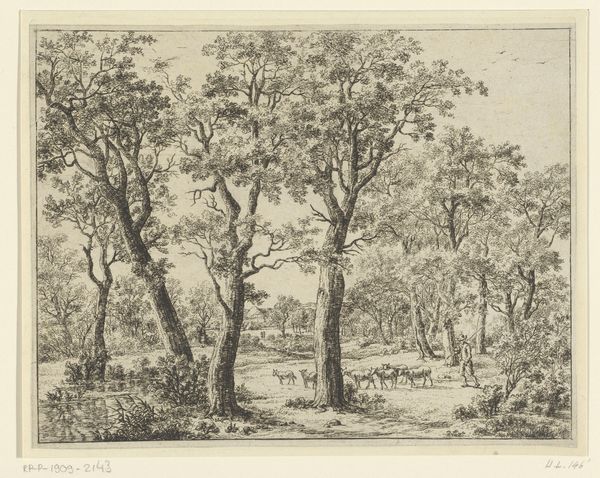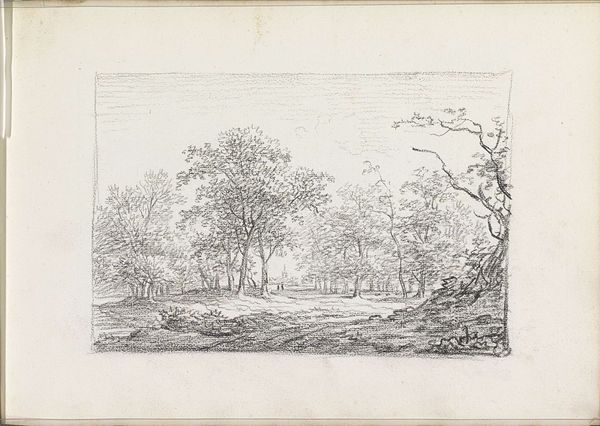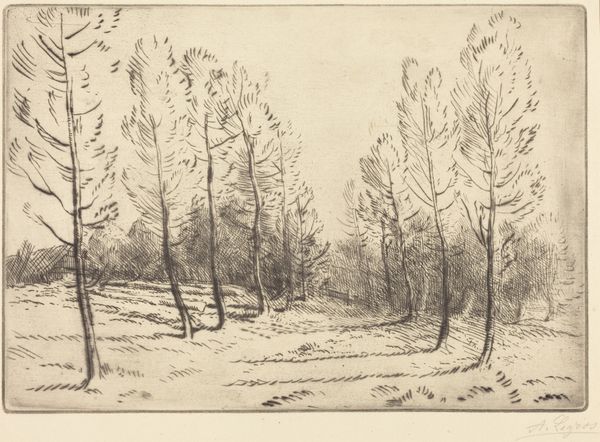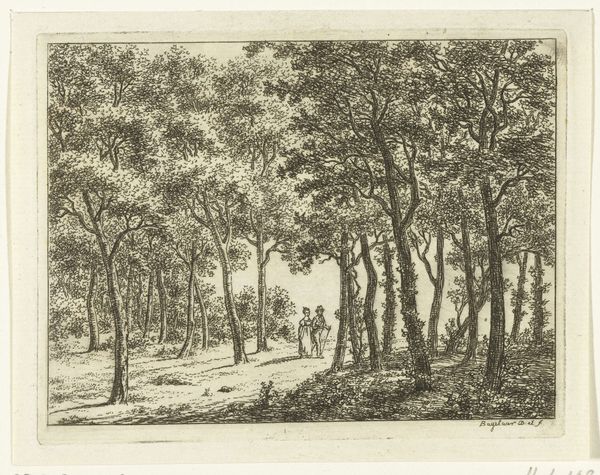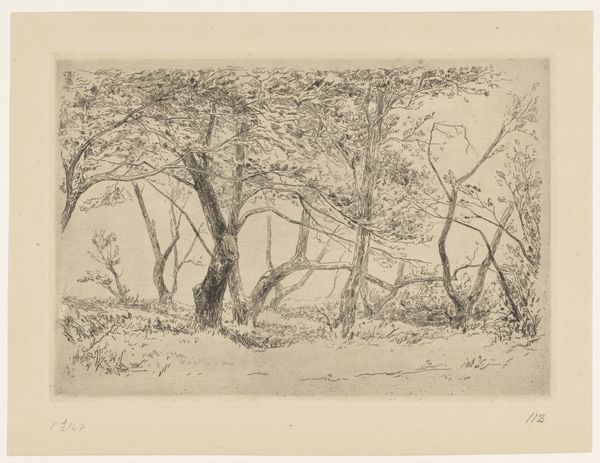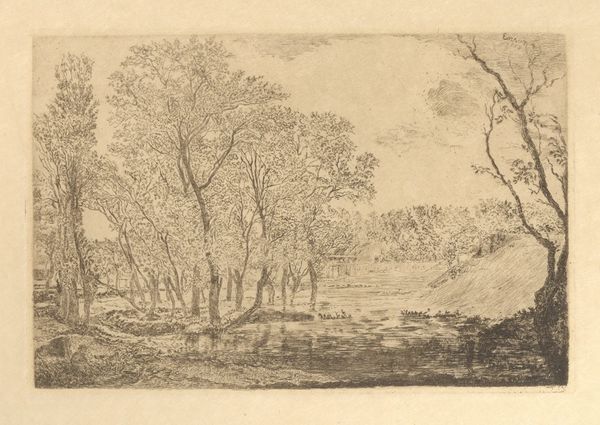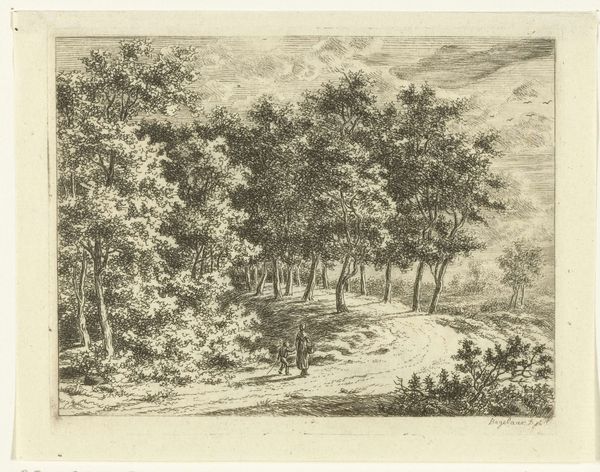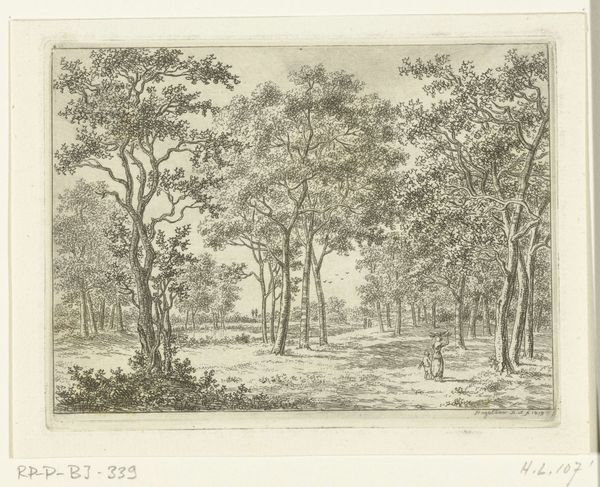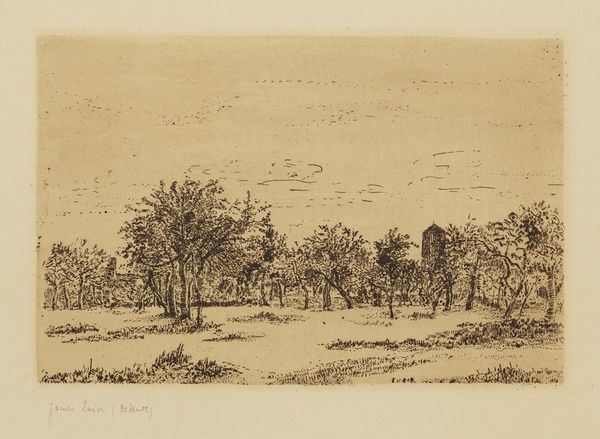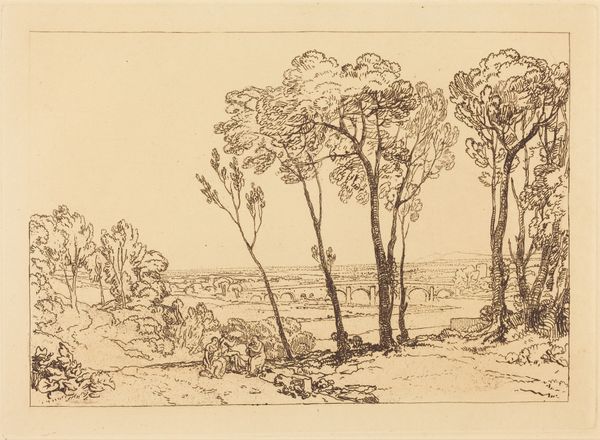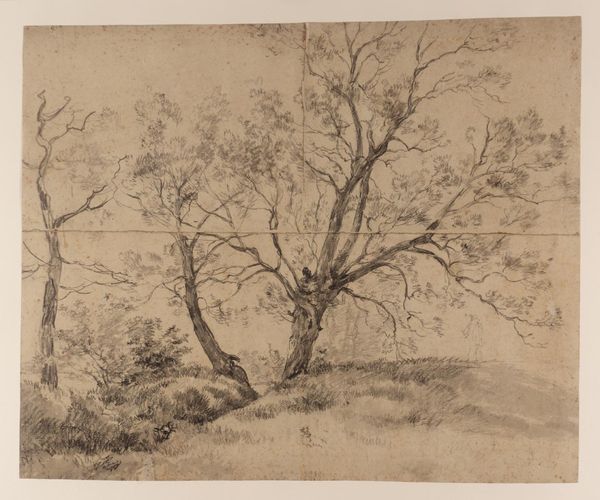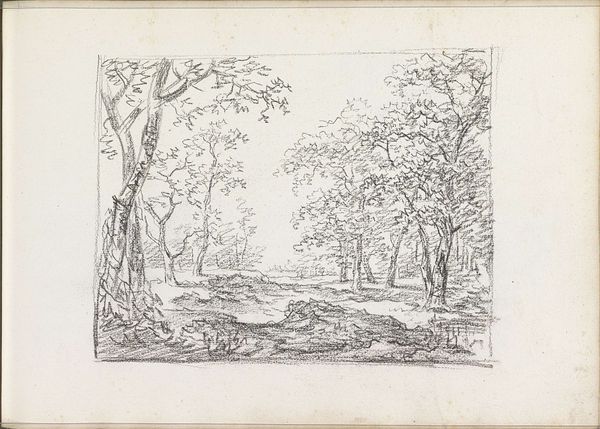
drawing, print, etching
#
drawing
# print
#
impressionism
#
etching
#
landscape
#
line
#
realism
Copyright: Public Domain: Artvee
Editor: This is James Ensor’s etching titled "Bosje," created in 1888. It's a detailed rendering of trees, created with the intaglio printmaking method. I’m immediately drawn to how dense it feels despite being just lines on paper. What's your perspective on this particular print? Curator: The beauty lies within the artist’s labor of production, doesn't it? Look closely at the etched lines and the spaces in between. Each line had to be carved painstakingly with precise, repetitive movements. Considering the industrial revolution and rise of consumerism at the time, this emphasis on individual artistry resists mass production, no? What’s compelling is not just the depiction of trees, but the demonstration of slow, manual craft in contrast to prevailing mechanization. Editor: I see what you mean about it being a physical process! Does the choice of etching as a medium enhance a commentary on the value of labor, or even on nature as something worked and shaped by forces outside itself? Curator: Precisely! Ensor consciously chooses a medium requiring great skill. While a painting conceals that labor under layers of color, an etching exposes its linear, step-by-step construction. The lines become a record of the artist's action. What is also revealed by that repetitive rendering? Editor: Maybe it underscores how landscapes are shaped by both natural processes, like erosion or growth, but also labor like land cultivation, if that makes sense? The little building on the edge hints at that tension. Curator: Absolutely. He's calling our attention to these relationships through material engagement. I'm so glad you observed the building on the edge. Can we reflect upon how nature isn’t something purely ‘natural’ for us as viewers anymore but already manipulated? Editor: Thinking about the etching process and the landscape as subjects has made me appreciate the intricate labor involved in what initially seemed like just a pretty scene! Thanks for highlighting all of that. Curator: And in that reflection, perhaps we consider not just "what" is depicted, but "how" it comes into being as an object that can shape what we value, and consume.
Comments
No comments
Be the first to comment and join the conversation on the ultimate creative platform.
